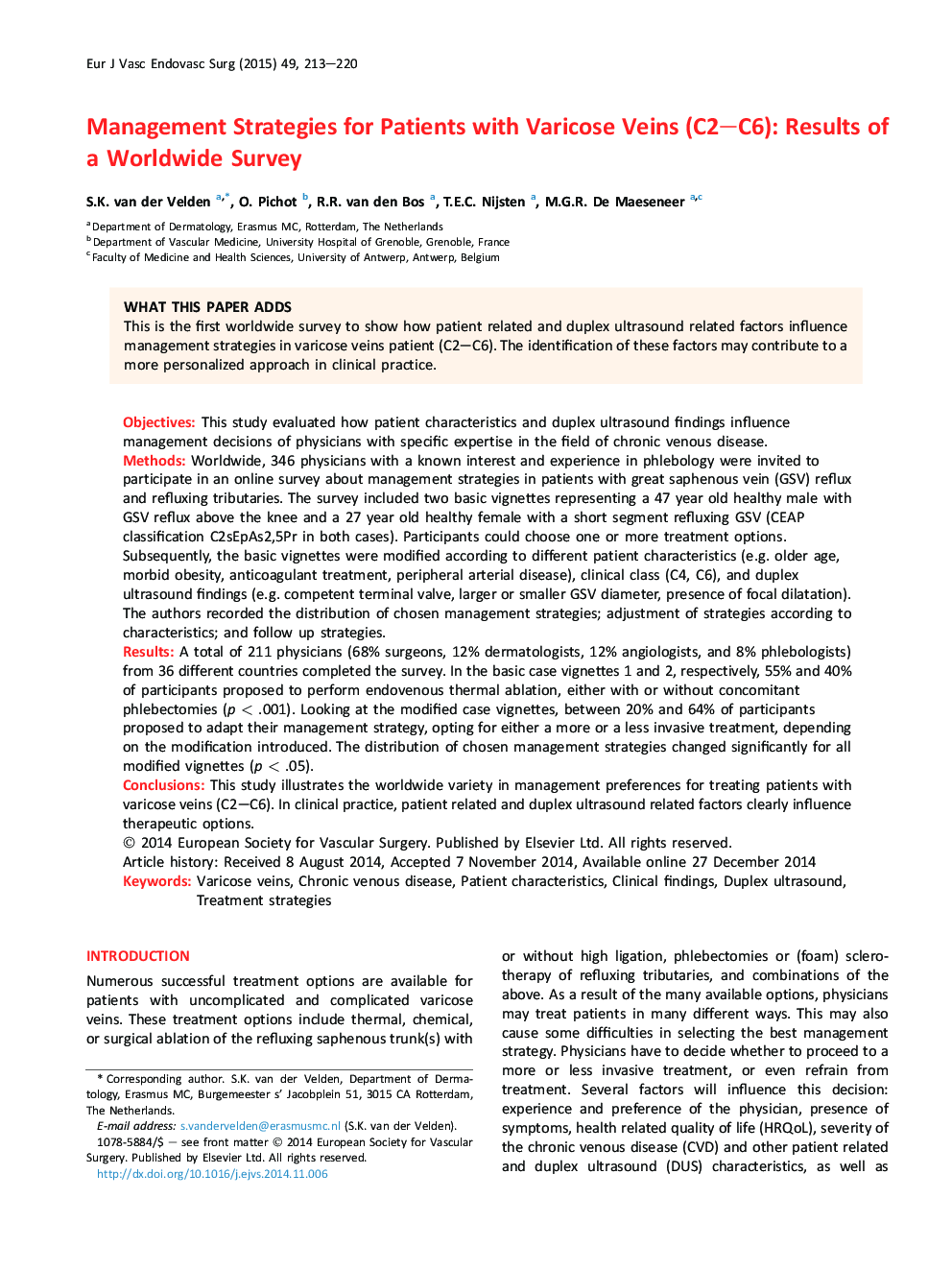| Article ID | Journal | Published Year | Pages | File Type |
|---|---|---|---|---|
| 2911867 | European Journal of Vascular and Endovascular Surgery | 2015 | 8 Pages |
ObjectivesThis study evaluated how patient characteristics and duplex ultrasound findings influence management decisions of physicians with specific expertise in the field of chronic venous disease.MethodsWorldwide, 346 physicians with a known interest and experience in phlebology were invited to participate in an online survey about management strategies in patients with great saphenous vein (GSV) reflux and refluxing tributaries. The survey included two basic vignettes representing a 47 year old healthy male with GSV reflux above the knee and a 27 year old healthy female with a short segment refluxing GSV (CEAP classification C2sEpAs2,5Pr in both cases). Participants could choose one or more treatment options. Subsequently, the basic vignettes were modified according to different patient characteristics (e.g. older age, morbid obesity, anticoagulant treatment, peripheral arterial disease), clinical class (C4, C6), and duplex ultrasound findings (e.g. competent terminal valve, larger or smaller GSV diameter, presence of focal dilatation). The authors recorded the distribution of chosen management strategies; adjustment of strategies according to characteristics; and follow up strategies.ResultsA total of 211 physicians (68% surgeons, 12% dermatologists, 12% angiologists, and 8% phlebologists) from 36 different countries completed the survey. In the basic case vignettes 1 and 2, respectively, 55% and 40% of participants proposed to perform endovenous thermal ablation, either with or without concomitant phlebectomies (p < .001). Looking at the modified case vignettes, between 20% and 64% of participants proposed to adapt their management strategy, opting for either a more or a less invasive treatment, depending on the modification introduced. The distribution of chosen management strategies changed significantly for all modified vignettes (p < .05).ConclusionsThis study illustrates the worldwide variety in management preferences for treating patients with varicose veins (C2–C6). In clinical practice, patient related and duplex ultrasound related factors clearly influence therapeutic options.
